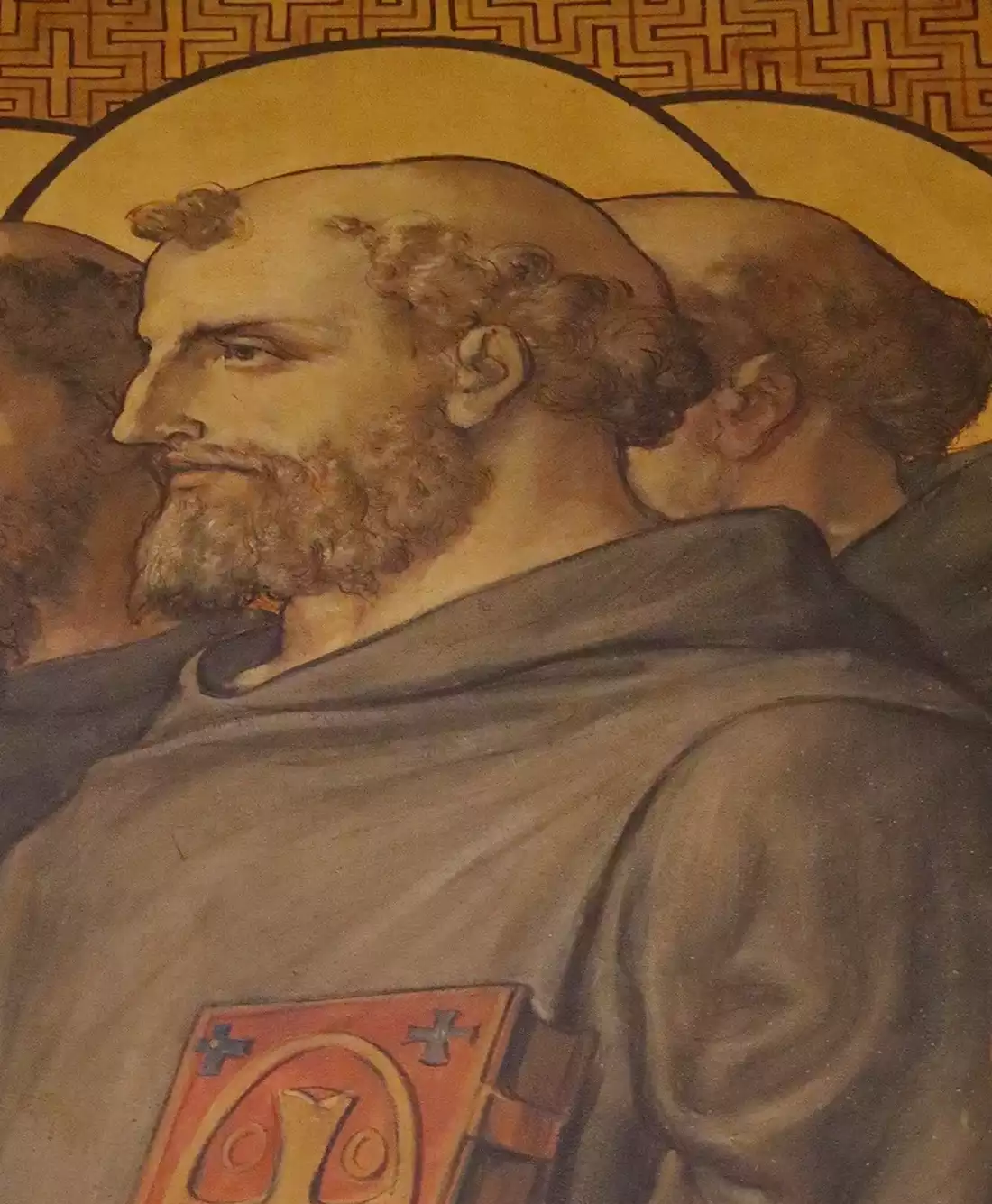
Robert of Arbrissel (c. 1045 – 1116), founder of Fontevraud Abbey, began his religious career as an early advocate for church reform during a turbulent period. Embracing a lifestyle of severe asceticism as an itinerant preacher wandering across western France, he attracted a diverse following from all walks of life, including marginalized groups who responded enthusiastically to his message of abandoning worldly attachments. In 1100 he established the double monastery of Fontevraud, which followed the Rule of St. Benedict while subjecting the male monks within its community to the ecclesiastical authority of the Abbess.
Robert of Arbrissel: A Preacher With Magnetic Appeal
As an itinerant preacher wandering across western France, Robert of Arbrissel developed a magnetic appeal that defied social barriers and attracted followers from nearly every class and walk of life. His fiery denunciations of greed, ambition, and the moral laxity of powerful clergy gave voice to a yearning for spiritual renewal in that turbulent age.
Having embraced a radical lifestyle of poverty and self-denial, his striking ascetic appearance lent credibility to his message calling others to abandon worldly attachments. Peasants and laborers, struggling under hardship and oppression, heard in Robert’s preaching a rebuke of the prevailing social order that privileged the wealthy and ignored the poor. Stories abound of prostitutes, lepers, converted Jews and even former Muslims flocking to this preacher who actively welcomed all outcasts.
For the marginalized people of medieval society, Robert’s voluntary embracing of complete poverty powerfully demonstrated his solidarity with their plight. Rather than judging or condemning them for their struggles, he inspired them to find purpose by sharing in Christ’s sufferings. They responded by forming the bulk of his ardent converts in every locality he visited.
The diverse backgrounds of people responding to his call soon generated criticism. Robert met accusations of sharing sleeping quarters with female followers, behavior considered outrageous at the time. Local clerics also took offense, viewing the enthusiastic crowds this vagabond preacher attracted as a threat to their own authority.
Yet the common folk identified with Robert as one of their own, captivated by his determination to flout social conventions. In time, the sincerity and substance of his message would prevail over initial controversy to earn widespread admiration and esteem. But from the outset, his fearless advocacy of radical reform attracted followers who felt profoundly touched by both the man and his words.
Fontevraud’s Unorthodox Governance Favors Female Authority
Robert of Arbrissel’s founding of the Fontevraud monastery in 1100 instituted an unusual arrangement where both men and women lived as monks and nuns sharing a communal life, but with ultimate authority resting with the Abbess. This remarkable structure reflected Robert’s confidence in the high qualities of religious women to exercise wise leadership.
From its inception, Robert entrusted governance of this new mixed community to a woman named Hersende of Champagne, establishing a tradition where only women could ever serve in the highest office of Abbess. He recruited the early nuns from high nobility, leveraging aristocratic connections to secure patronage and protection for the nascent order.
Yet within the monastery walls, the class hierarchy was stripped away. Noble nuns and lower class converts all donned the same simple black and white habit in a profession of spiritual egalitarianism. And while some monks came from elite backgrounds, as a whole the male contingent faced greater restrictions, including tighter enclosure and minimal property.
The most striking requirement for priests, clerics and lay brothers at Fontevraud was their institutionalized submission to the authority of the Abbess and nuns in their midst. As one early chronicler noted with astonishment, monks were expected to obediently receive “whatever the nuns shall confer upon them.”
This unorthodox arrangement flew in the face of contemporary gender norms. But Robert intentionally fostered this inversion of authority within a monastic context to embody his radical inclusive vision. By establishing a new order where women could enjoy positions of power, he shook up prevailing social conceptions and challenged the church to widen its embrace.
In just a few decades, Robert of Arbrissel’s sincere faith and daring innovation left an indelible impact upon Western religious life. His Christ-like identification with the outcast and embracing of radical poverty inspired many, while his founding of Fontevraud Abbey established a pioneering model of monasticism. Though dead for centuries, his memory lives on as an example of the power of one person to envision and work toward spiritual renewal even in the darkest of ages.
References
Peters, Edward. Heresy and authority in medieval Europe: documents in translation, University of Pennsylvania Press, 1998.
Evans, Gillian R. Robert of Arbrissel: A Medieval Religious Life, Cistercian Publications, 2016.
Kelly, Amy. “Religious patronage and royal propaganda: Fontevraud Abbey between Plantagenet rival brothers Henry II and Richard Lionheart” Medieval Feminist Forum, vol. 50 no. 1, 2014, p. 35+. Gale Academic OneFile.
Berman, Constance Hoffman. The White Nuns: Cistercian Abbeys for Women in Medieval France, University of Pennsylvania Press, 2018.
Magnani, Eliana. Silent Sororities: Enslaved and Freed Black Women as Members of White Religious Communities in New France and Spanish Florida.” French Colonial History, vol. 15, Michigan State University Press, 2014, pp. 25–40.
